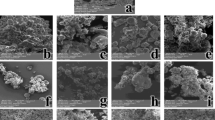Abstract
Green tea has been credited with providing a wide variety of health benefits like higher total antioxidant, cancer prevention, and anti-irritant etc. Microencapsulation technology is used to prevent antioxidant loss during processing which involves entrapment of active material into carrier material. The experiments were designed using response surface methodology based on three level two factor (green tea extract, 10–25 % and drying inlet air temperature, 120, 130 and 140°C) central composite design. The feed emulsion was prepared with green tea extract as core material and 40 % maltodextrin concentration as wall material with the ratio of core to wall (1:2) and it was fed into the spray dryer at varied drying inlet air temperature to get encapsulated green tea extract powder. The quality characteristics were analysed such as moisture content, total antioxidant activity and total phenolic content and the process conditions were optimized using desirability function methodology. At optimum spray drying condition moisture content, total antioxidant activity and total phenolic content were found to be 3.1 % w.b., 72.91 % free radical scavenging activity by DPPH method, 57.81 mg/g of dry matter, expressed as gallic acid equivalent respectively with desirability value of 0.92.


Similar content being viewed by others
Abbreviations
- %:
-
Percentage
- °:
-
Degree
- R 2 :
-
Coefficient of determination
- ±:
-
Plus–minus
- ::
-
Ratio
References
Anand Jigisa, Rai Nishant, Kumar Naveen, Gautam Pankaj, Green tea a magical herb miraculous outcomes. Int. Res. J. Pharm. 3(5), 139–148 (2012)
P.N. Ezhilarasi, P. Karthik, N. Chhanwal, C. AnandhaRamakrishnan, Nano encapsulation techniques for food bioactive components: A Review. Food. Bioprocess. Technol. 6(3), 628–647 (2013)
H. Umer, H. Nigam, A.M. Tamboli, M. Sundara Moorthi Nainar, Microencapsulation: process, techniques and applications. Int. J. Res. Pharm. Biomed. Sci. 2(2), 474–481 (2011)
K.E. Bae, S.J. Lee, Microencapsulation of avocado oil by spray drying using whey protein and maltodextrin. J. Microencapsul. 25, 549–560 (2008)
S.Y. Hundre, P. Karthik, C. Anandharamakrishnan, Effect of whey protein isolate and β-cyclodextrin wall systems on stability of microencapsulated vanillin by spray and freeze drying method. Food. Chem. 174, 1624 (2011)
P. Balasubramani, P.T. Palanisamy, R. Viswanathan, V. Thirupathi, A. Subbarayan and J. Prakash Maran, Microencapsulation of garlic oleoresin using maltodextrin as wall material by spray drying technology. Int. J. Biol. Macromolec. 72, 210–217 (2015)
J. Prakash Maran, B.Priya, Comparison of response surface methodology and artificial neural network approach towards efficient ultrasound-assisted biodiesel production from muskmelon oil. Ultrason. Sonochem. 23, 192–200 (2015)
J. Prakash Maran, S. Manikandan, B.Priya, P.Gurumoorthi, Box-Behnken design based multi-response analysis and optimization of super critical carbon dioxide extraction of bioactive flavonoid compounds from tea (Camellia sinensis L.) leaves. J. Food Sci. Technol. (2013). doi:10.1007/s13197-013-0982-z
V. QuanVuong, B. John Golding, E. Costas Stathopoulos, H. Minh Nguyen, D. Paul Roach, Optimizing conditions for the extraction of catechins from green tea using hot water. J. Sep. Sci. 34, 3099–3106 (2011)
Priya Balasubramani, Rangaraju Viswanathan, Mariappanadar Vairamani, Response surface optimization of process variables for microencapsulation of garlic (Allium sativum L.) Oleoresin by spray drying. Biosyst. Eng. 114, 205–213 (2013)
AOAC. Official’s methods of analysis. Virginia: Association of Official Analytical Chemists, Inc (2000)
D. Pasrija, P.N. Ezhilarasi, D. Indrani, C. Anandharamakrishnan, Microencapsulation of green tea polyphenols and its effect on incorporated bread quality. LWT-Food Sci. Technol. 64, 289–296 (2015)
V.L. Singleton, R. Orthofer, R.M. Lamuela-Raventos, Analysis of total phenols and other oxidation substrates and antioxidants by means of Folin-Ciocalteu reagent. Methods Enzymol. 299, 152–178 (1999)
J. Prakash Maran, B.Priya, S.Manikandan, Modeling and optimization of super critical fluid extraction of anthocyanin and phenolic compounds from Syzygium cumini fruit pulp. J.Food Sci.Technol. 51(9), 1938-1946 (2014). doi:10.1007/s13197-013-1237-y
S.A. Hogan, B.F. Mcnamee, E.D. O’Riordan, M. O’Sullivan, Emulsification and microencapsulation properties of sodium caseinate/carbohydrate blends. Int. Dairy J. 11(3), 137–144 (2001)
A.M. Goula, K.G. Adamopoulos, N.A. Kazakis, Influence of spray conditions on tomato powder properties. Drying Technol. 22, 1129–1151 (2004)
Zuzana Réblová, Effect of temperature on the antioxidant activity of phenolic acids. J. Food Sci. 30(2), 171–177 (2012)
Ramamoorthy Praveen, Awang Bono, Antioxidant activity, total phenolic and flavonoid content of Morinda citrifolia fruit extracts from various extraction processes. J Eng Science Technol 2(1), 70–80 (2007)
E.C. Frascareli, V.M. Silvaa, R.V. Tonona, M.D. Hubingera, Effect of process conditions on the microencapsulation of coffee oil by spray drying. Food Bioprod. Process. 90, 413–424 (2012)
Sari wahyuni, Purwiyatno Hariyadi, Hanifah Nuryani Lioe, Natthawuddi Donlao, Effect of spray drying conditions on physical and chemical properties of dried green tea extract, Bogor agricultural university, Bogar (2011)
Author information
Authors and Affiliations
Corresponding author
Rights and permissions
About this article
Cite this article
Tengse, D.D., Priya, B. & Kumar, P.A.R. Optimization for encapsulation of green tea (Camellia sinensis L.) extract by spray drying technology. Food Measure 11, 85–92 (2017). https://doi.org/10.1007/s11694-016-9374-4
Received:
Accepted:
Published:
Issue Date:
DOI: https://doi.org/10.1007/s11694-016-9374-4




